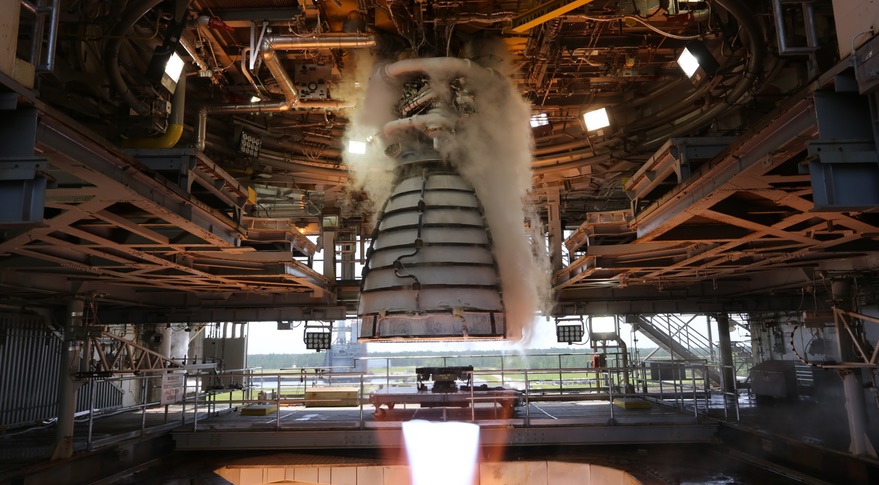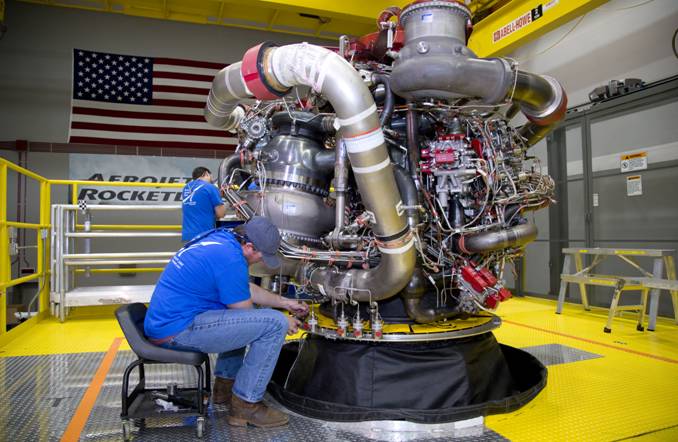Engine for US Military's New Space Plane Fires Up in 10-Day Test

WASHINGTON — A space shuttle-era main engine is undergoing a series of daily test firings to demonstrate its suitability for use on a reusable spaceplane under development.
The Aerojet Rocketdyne AR-22 engine is in the midst of a series of 10 100-second engine firings over the course of 10 days at NASA's Stennis Space Center in Mississippi. As of July 2, the company has completed six such tests and was on track to complete the rest on schedule.
The engine is a version of the Space Shuttle Main Engine with only minor modifications, said Jeff Haynes, AR-22 program manager at Aerojet, in a July 2 interview. "We're not designing or building any new hardware for this engine," he said. "We're taking and making use of existing hardware, most of it being flight proven." [DARPA's Experimental Spaceplane in Pictures]
One minor difference in the engine, he said, is using a new flight controller, or computer system, from the updated version of the RS-25 engine intended for use on NASA's Space Launch System. "The rest of it is not new technology," he said.
The purpose of the test series is to demonstrate that the engine can be used 10 times in 10 days. That is a major requirement of the Defense Advanced Research Project Agency's Experimental Spaceplane program, for which the AR-22 will power Boeing's Phantom Express vehicle.

Although the AR-22 and its shuttle-era predecessors have decades of experience, the same engine has never been tested so frequently. Haynes said that there was only one case where the same engine was fired one day apart. "We've already far exceeded that in this series," he said.
"Ten months ago, six months ago, even three months there were a lot of naysayers saying that this couldn't happen, it was going to be too difficult with this engine because it's never done it beforehand," said Scott Wierzbanowski, the DARPA Experimental Spaceplane program manager. "But we're putting a lot of those concerns to bed."
Get the Space.com Newsletter
Breaking space news, the latest updates on rocket launches, skywatching events and more!
The Experimental Spaceplane program, formerly known as XS-1, is developing a reusable lower stage capable of daily launches that, equipped with an upper stage, can place 1,360 kilograms into orbit. In May 2017 DARPA selected Boeing to develop XS-1, beating out Masten Space Systems and Northrop Grumman who, like Boeing, received earlier study contracts.
Boeing is beginning to build hardware for the Phantom Express vehicle. The vehicle's liquid oxygen tank, made of composite materials, is currently in an autoclave being cured, said Steve Johnston of Boeing. "We're in the production of flight hardware, from a tank standpoint."
Other subsystems are going through a series of critical design reviews in the coming months, culminating in a review for the overall vehicle in early 2019, he said. Full assembly of the vehicle will begin in the spring of 2019.
On that schedule, flight tests of Phantom Express will begin in 2021, Johnston said. "There are a lot of different options on the table as to the specifics of the flight test program, depending on what the different stakeholders are interested in seeing us demonstrate," he said. That includes, he said, an original goal of the program of performing 10 flights in 10 days. "We're designing all the aspects of this system to be able to support flying on a daily basis."
"Things are going quite well," Wierzbanowski said. "I think we're pretty much on a very solid path of making this happen on the timescale that we want to."
This story was provided by SpaceNews, dedicated to covering all aspects of the space industry.
Join our Space Forums to keep talking space on the latest missions, night sky and more! And if you have a news tip, correction or comment, let us know at: community@space.com.

Jeff Foust is a Senior Staff Writer at SpaceNews, a space industry news magazine and website, where he writes about space policy, commercial spaceflight and other aerospace industry topics. Jeff has a Ph.D. in planetary sciences from the Massachusetts Institute of Technology and earned a bachelor's degree in geophysics and planetary science from the California Institute of Technology. You can see Jeff's latest projects by following him on Twitter.

